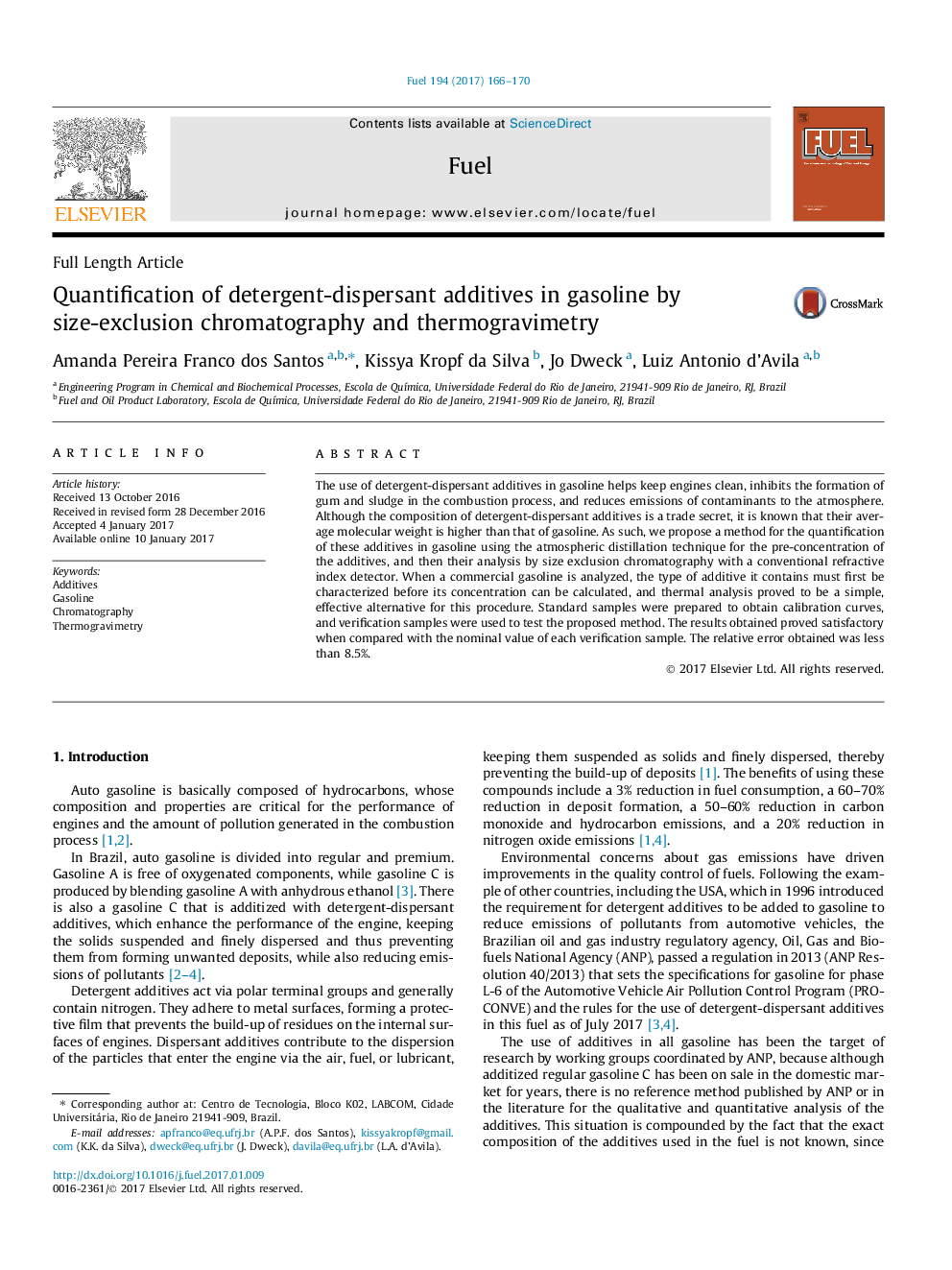| Article ID | Journal | Published Year | Pages | File Type |
|---|---|---|---|---|
| 6475437 | Fuel | 2017 | 5 Pages |
The use of detergent-dispersant additives in gasoline helps keep engines clean, inhibits the formation of gum and sludge in the combustion process, and reduces emissions of contaminants to the atmosphere. Although the composition of detergent-dispersant additives is a trade secret, it is known that their average molecular weight is higher than that of gasoline. As such, we propose a method for the quantification of these additives in gasoline using the atmospheric distillation technique for the pre-concentration of the additives, and then their analysis by size exclusion chromatography with a conventional refractive index detector. When a commercial gasoline is analyzed, the type of additive it contains must first be characterized before its concentration can be calculated, and thermal analysis proved to be a simple, effective alternative for this procedure. Standard samples were prepared to obtain calibration curves, and verification samples were used to test the proposed method. The results obtained proved satisfactory when compared with the nominal value of each verification sample. The relative error obtained was less than 8.5%.
